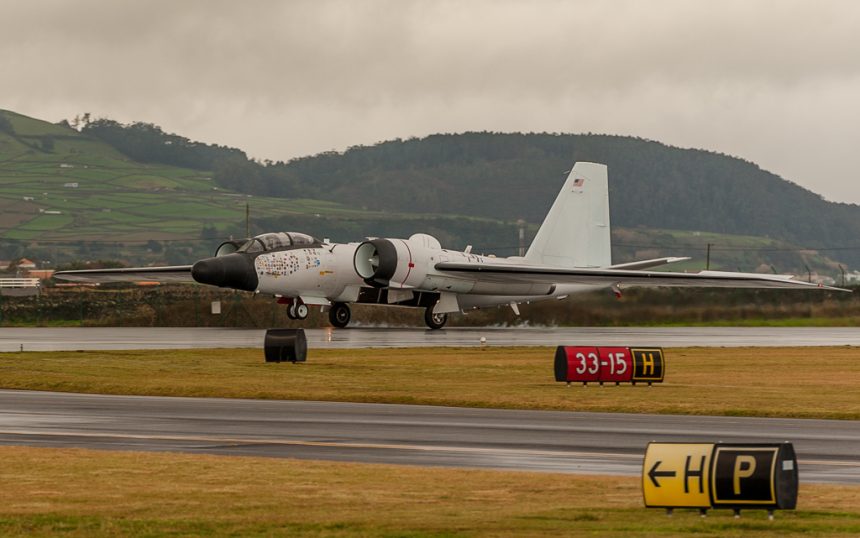At the beginning of December 2012, The Aviationist profiled the return of a NASA B-57 Canberra aircraft from operations in Afghanistan. In addition to supporting academic and high-altitude meteorological research, these unique aircraft have been used to test Northrop Grumman’s Battlefield Airborne Communications Node (BACN) system and deploy the hardware overseas.
BACN is technological “gateway” system that allows aircraft with incompatible radio systems and datalinks to transfer information and communicate.
The U.S. military uses various datalink systems to exchange tactical information, and many are not capable of working together. For example, a U.S. Air Force F-15 can use its Link-16 system to exchange target information with a U.S. Navy F/A-18. However, the F/A-18 could not exchange information with a USAF B-52 or B-1 bomber. The advanced F-22 can exchange information with other Raptors, but because of security concerns, cannot exchange information on legacy datalinks such as Link-16.
This lack of compatibility is a major obstacle in a theater such as Afghanistan where air assets from many services are called upon to provide support for ground troops of different nations. Additionally, the complicated joint operations required to engage a modern integrated air defense system are greatly simplified by exchanging target information via datalinks.
The BACN system is also used to link ground troops and Forward Air Controllers (FACs)/Joint Terminal Attack Controllers in a non-line-of-sight (LOS) environment. In the rugged, mountainous terrain of Afghanistan, troops are not always able to establish LOS communications with close support aircraft overhead. Moving position or relocating to higher ground could be fatal in a combat situation.
By orbiting at high-altitude, BACN equipped air assets can provide a communications link from ground commanders to their allies in the sky. For example, a legacy USAF A-10 attack aircraft could loiter away from a battle area while using the BACN link to communicate with a special-forces FAC on the ground. The A-10 pilot could wait until all targeting information is ready before “un-masking” and beginning an attack run.
The BACN system is also deployed onboard USAF E-11A aircraft and EQ-4B Global Hawk UAV’s.
The E-11A is a derivative of the Bombardier Global Express business jet. Four of these aircraft were procured by the USAF in 2011 and are operating in Southwest Asia and the Middle East.
The high altitude and endurance capabilities of these three platforms makes them well suited to the persistence battlefield communications support mission.
Michael Glynn for theAviationist.com
Image credit: U.S. Air Force

















